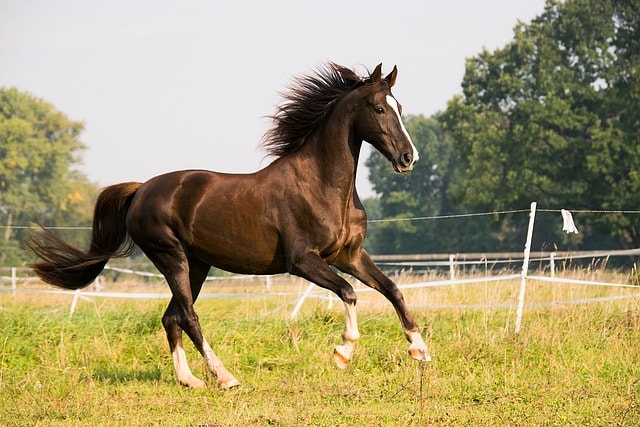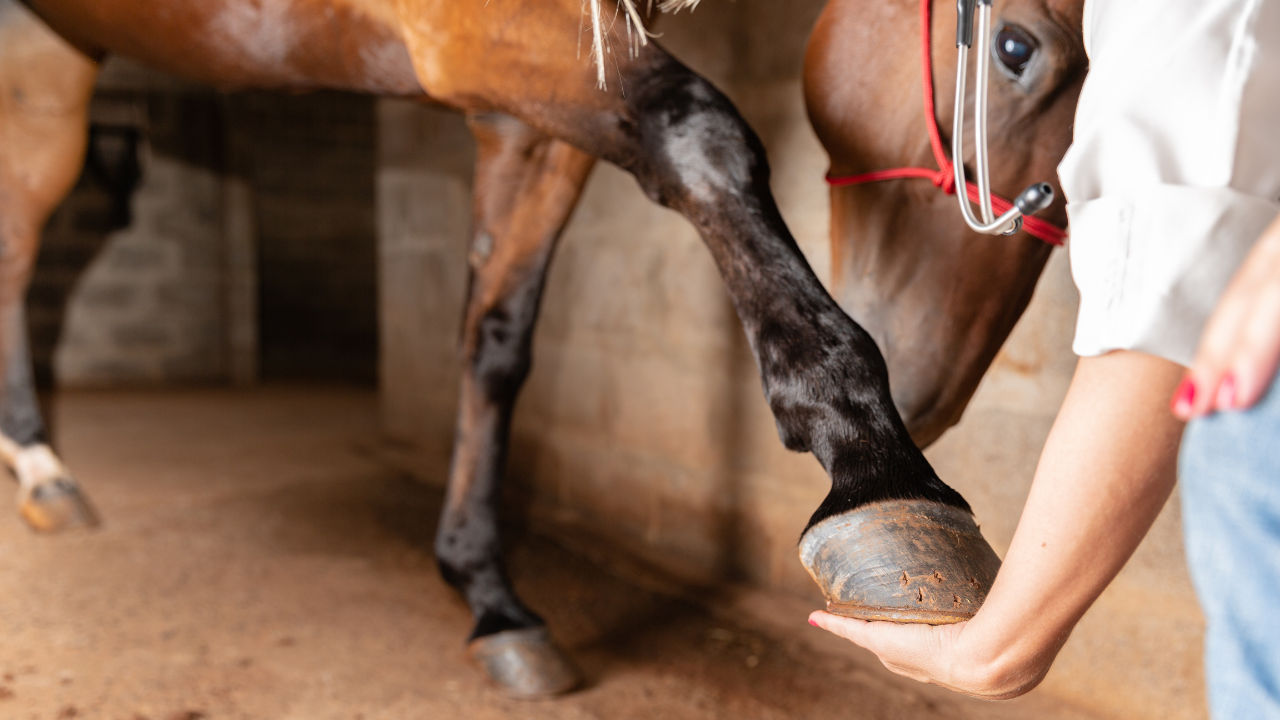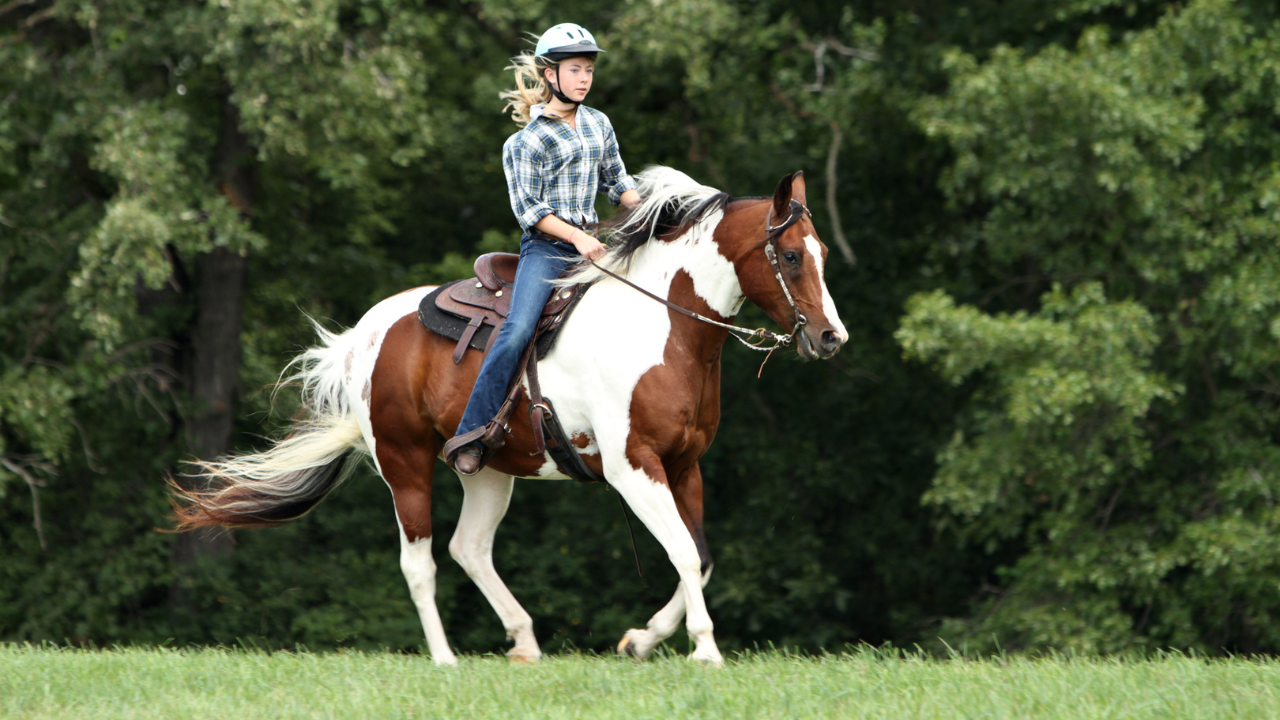Tendon Damage in Horses: A Comprehensive Guide for Horse Owners

Tendon damage is one of the most common injuries in horses, especially in animals that are active in sports. This damage can have serious effects on your horse's health and performance. In this detailed guide, you will learn everything you need to know about tendon damage in horses: from the causes to the symptoms and diagnosis to treatment and prevention. We offer you comprehensive information to give your horse the best possible care and avoid long-term damage.
What is tendon damage in horses?
Tendon damage in horses describes injuries or diseases of the tendons, which are among the most important structures in a horse's musculoskeletal system. Tendons are fibrous tissue structures that connect muscles to bones and thus play a crucial role in power transmission and movement. They enable the horse to move by transferring the force generated in the muscles to the bones. These elastic strands are extremely resilient, but also susceptible to overload and injury, especially under intense strain.
Tendons are mainly made of collagen fibers, which offer high tensile strength but only have limited elasticity. This low elasticity means that tendons are sensitive to heavy loads and can easily be damaged if they are overused or incorrectly loaded. Horses, especially those that are active in sports or are frequently trained, are particularly at risk of tendon damage because their tendons are subjected to extreme stress during rapid movements, abrupt changes of direction and jumps.
The structure and function of tendons in horses
Horse tendons are made of dense, collagenous connective tissue and have relatively low elasticity. They connect muscles to bones and transmit the force generated by muscle contractions. Their structure enables tendons to withstand high loads, but these properties also make them susceptible to disease, especially under intense strain.
The flexor tendon system in the horse's front legs is particularly susceptible to tendon injuries. These tendons carry a large part of the body weight and absorb the forces that occur when running, jumping or making sudden changes in direction.
Causes of tendon damage in horses
Tendon damage can be caused by a variety of factors. The most common causes include:
-
Tendon Overload : Intense periods of training without adequate recovery periods can overtax a horse's tendons and lead to tendon injury. Excessive use without adequate rest periods leads to micro-injuries that can accumulate and lead to greater damage.
-
Inadequate warm-up of the horse : A horse that is not warmed up enough is more susceptible to injury. Cold loads increase the risk because the tendons do not have the necessary flexibility.
-
Incorrect loading : Uneven loading, often caused by incorrect hoof position or uneven leg work, can lead to chronic tendon problems.
-
Unfavorable floor conditions : Floors that are too hard, slippery or uneven can increase the risk of tendon injuries. Training on such floors can significantly increase the strain on the tendons.
-
Abrupt movements : Sudden changes in direction, stops or high jumps place a great deal of strain on the tendons and can lead to acute injuries.
-
Age of the horses : Older horses often have reduced elasticity of the tendon tissue, which increases the risk of injury.
Symptoms of tendon damage in horses
The signs of tendon damage in a horse are not always immediately obvious, but can be quickly recognized. The most common signs are:
-
Swelling : Swelling from tendon damage often occurs directly over the affected tendon. This can be either localized or more extensive.
-
Warmth : Injured or inflamed tendons are often warmer than the surrounding tissue, which can be a sign of inflammation.
-
Lameness : Lameness may vary depending on the severity of the injury. It often occurs suddenly, especially in acute tendon injuries.
-
Pain sensitivity : Touching or pressure on the affected tendon often causes pain and discomfort for your horse.
-
Altered movements : Your horse may move stiffly or uncertainly and avoid certain movements.
diagnosis of a tendon injury
The evaluation of tendon injuries should be performed by a qualified veterinarian. Diagnostic measures include:
-
Clinical examination : The doctor checks the signs of illness, lameness and swelling to obtain initial clues as to the type and severity of the injury.
-
Ultrasound examination : This method provides a detailed view of the tendon structure and helps determine the exact location and extent of the injury.
-
Magnetic resonance imaging (MRI) : In severe cases or for more precise diagnosis, an MRI may be used to accurately assess the injury.
The precise determination of a tendon injury is crucial for choosing the right therapy and preventing long-term damage.
First measures in case of tendon damage
If you suspect that your horse has tendon damage, quick and correct measures are important:
-
Cooling : Cool the affected area as quickly as possible to reduce swelling. Ice packs or special cooling gaiters are suitable for this.
-
Stall rest : Your horse should immediately remain in the stall to protect the affected tendon and avoid further strain.
-
Inform your veterinarian : Contact a veterinarian immediately to obtain an accurate assessment and appropriate treatment.
Treatment of tendon damage in horses
Treatment for a tendon injury depends on the severity of the injury. General treatment approaches include:
-
Rest and protection : The most important measure for tendon damage is rest. Your horse must spend a long time in the stable and must not be moved.
-
Cooling and bandaging : Regular cooling and applying a stable bandage help to reduce swelling and pain.
-
Anti-inflammatory medications : The veterinarian may prescribe medications to control inflammation and promote recovery.
-
Physiotherapy : After the acute phase, physiotherapy can help strengthen the tendon and restore normal function.
Modern therapy methods for tendon injuries
In addition to classic treatment methods, there are also modern approaches that can accelerate the healing process:
-
Shockwave therapy : This therapy uses mechanical shockwaves to stimulate tendon healing and aid tissue regeneration.
-
Platelet-Rich Plasma (PRP) : In this method, the horse's blood plasma is processed and injected into the injured tendon to promote regeneration.
-
Stem cell therapy : Stem cells are injected into the injured tissue to accelerate tendon regeneration and aid healing.
-
Laser therapy : The use of laser light stimulates blood circulation in the tissue, which can promote regeneration.
Rehabilitation after tendon damage
Rehabilitation after tendon injuries is an essential part of healing and should be carefully planned:
-
Slow return to exercise : The horse should be slowly reintroduced to exercise after the rest period. First, only short steps are taken before the speed and duration are increased.
-
Regular check-ups : Your veterinarian should perform regular check-ups to monitor healing progress and make adjustments to the rehabilitation plan.
-
Training on soft surfaces : At the beginning of rehabilitation, training should be done on soft surfaces to minimize stress on the tendon.
Duration of healing of tendon damage
The healing time of a tendon injury can vary greatly depending on the severity of the injury:
-
Mild sprains : These can usually heal within 6 to 8 weeks if treated properly.
-
Partial tears : Here the healing time can take several months, depending on the severity of the tear.
-
Complete tears : Complete tears may take up to a year or more to heal, and in some cases, surgical intervention is required.
Long-term consequences of tendon damage
Even after successful healing, the tendon tissue is often no longer as resilient as before. The risk of re-injury remains high. It is important to follow an adapted training program after healing and to monitor the tendons regularly.
Prevention of tendon damage in horses
Preventing tendon damage is crucial to minimize the risk:
-
Regularly warming up the horses : A thorough warm-up before training increases the flexibility of the tendons and reduces the risk of injury.
-
Suitable surfaces : Avoid hard, uneven or slippery surfaces when training to reduce strain on the tendons.
-
Varied training : Varied training prevents one-sided strain and reduces the risk of tendon injuries. Overloading should be avoided.
-
Good hoof care : Make sure that your hoof is cared for correctly and regularly to avoid incorrect loading and tendon problems.

Influence of nutrition on the tendon health of your horse
Nutrition plays an important role in tendon health:
-
Omega-3 fatty acids : These can have an anti-inflammatory effect and support the healing of tendon diseases. They are found in flaxseed and fish oil.
-
Antioxidants : Vitamins such as vitamin C and E help protect cells from damage and promote healing.
-
Collagen : Supplements containing collagen can support the regeneration of tendon tissue.
The Role of Horseshoeing in Tendon Damage
The right horseshoe is crucial for preventing tendon damage:
-
Regular checks : Have the hooves checked regularly by an experienced farrier and adjusted if necessary.
-
Correct hoof position : Incorrect hoof position can lead to incorrect strain on the tendons. Correctly fitted horseshoes can prevent this.
Psychological stress for the horse during healing
The time of box rest and restricted movement can be stressful for your horse:
-
Activities : Include toys or other activities in the crate to avoid boredom.
-
Mental stimulation : Small exercises and walks in hand can help keep the horse mentally occupied and less stressed.
Long-term care and aftercare
Even after tendon damage has healed, regular follow-up care is important:
-
Regular check-ups : Have the tendons checked regularly by a veterinarian to ensure that they are fully regenerated.
-
Adapted training plan : The training plan should be adapted after healing to minimize the risk of re-injury.

Conclusion: Take tendon damage in horses seriously and treat it properly
Tendon damage is a serious injury that not only affects your horse's ability to move, but can also have long-term effects on his health and performance. It requires a comprehensive and careful approach to both treat acute symptoms and minimize long-term consequences.
1. Immediate reaction and correct diagnosis:
As soon as you suspect that your horse has suffered tendon damage, you need to act quickly. Immediate cooling of the affected area and immediate rest are important first steps. Involving a veterinarian for an accurate diagnosis is crucial. A precise assessment, made through clinical examinations and imaging procedures such as ultrasound or MRI, makes it possible to determine the exact extent of the injury and initiate the appropriate therapy.
2. Tailor-made treatment and therapy:
The treatment of tendon damage should always be tailored to the severity of the injury and the specific needs of your horse. In addition to basic rest and protection, modern therapy methods such as shock wave therapy, platelet-rich plasma (PRP) and stem cell therapy can significantly accelerate the healing process. It is important to select and carry out these treatments in consultation with your veterinarian in order to achieve the best possible results.
3. Patience and structured rehabilitation:
After the acute phase of analysis, rehabilitation begins, which is often the longest part of the healing process. Patience is of utmost importance here. The training plan should be adjusted slowly, starting with short steps and gradually increasing the intensity. Careful monitoring by the veterinarian is necessary to ensure that the tendon heals correctly and to minimize the risk of relapse.
4. Long-term prevention and aftercare:
Even after successful healing, the work is not over. Tendon damage often leaves a certain weakening of the tissue, which requires a permanent adjustment of the training and care plan. Regular check-ups by a veterinarian and adjustment of the training plan are essential to prevent re-injury. In addition, preventive measures such as proper warm-up, suitable ground conditions and good hoof care should be continuously integrated into everyday life.
5. Holistic view of horse health:
Tendon health is closely linked to your horse's overall health. A balanced diet that provides all the necessary nutrients for tendon health and good hoof care are just as important as training and rehabilitation. Your horse's mental and emotional health should also be addressed to minimize stress and promote well-being.
6. Education and prevention:
Knowing the risk factors for tendon damage and implementing appropriate prevention strategies are crucial to reducing the risk of tendon injuries. Regularly inform yourself about current developments in equine medicine and adapt your care and training methods accordingly.
In summary, tendon damage in horses is a serious matter that requires extensive expertise, timely medical intervention and careful aftercare. By being proactive about your horse's health and well-being and paying attention to preventative measures, you can significantly reduce the risk of tendon damage and help your horse lead a healthy and active life.












